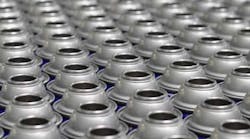An opportunity presented itself not too long ago when my company was forced to re-examine the use of some equipment in our two facilities. We package dry goods for a variety of clients using nearly 40 production lines. Such is the nature of our business; there is a need to have a lot of flexibility in the types of machines that we use, as well as the methods by which we can use those same machines.
Our company has been around since just after World War II, when we were producing nutritional supplements to returning troops. Over the years, the need to use machines to augment what has primarily been a manual labor type of environment has resulted in a very diverse range of equipment and controls methods.
Whether by blind luck or divine intervention, we have managed to pick some good vendors over the years and have put together some pretty robust packaging lines and processes—so robust, it seems, that we have overlooked what should have been some obvious deficiencies over newer vintage equipment. Let’s face it, if it works, why mess with it? Our journey and self-examination are not all that uncommon in manufacturing facilities all over the world.
As it happens, one particular piece of equipment in our inventory has changed little over the 30 or so years since we first started using it. We are intimately familiar with how it runs, why it runs and how we interact with it on a daily basis. We like it so much that we have 40 or so of them in our operations. When we had an opportunity that prompted us to re-examine this particular piece of equipment, we decided to approach that review with the mindset of a new machine with a modern control package on it.
While it would be easy to just modernize the same components that were used in the controls design, it made sense to have a look at what we might do to add value.
From the outset, we recognized that a controls design from 30 years ago didn’t incorporate any of the high-level safety measures that are in common use and industry-regulated today.
Dual-channel safety circuits, utilizing inherently fail-safe devices, self-monitoring and manual reset were key considerations of our redesign. Thinking about it further, the controls package of 30 years ago wasn’t very energy efficient either.
A new design should also use the latest in frequency convertor technology and implement safe-off features to further protect both user and maintenance personnel. Lastly, any new design should not be attempted without recognizing the obvious advantages of quick-connect technology. This particular equipment is used in a rather industrial environment where the exposure to dust is great and the need to move the equipment around frequently results in broken or failed components due to extreme use.
As a final consideration, we wanted to get ourselves away from the protocol that necessity is the mother of invention. This seemed to determine many of our earlier design projects. We tend to implement and then improve with a straight-line planning mentality. While the finished results are effective, they can look somewhat haphazard in form and function.
Our company has always been proud of our can-do, forward-thinking mentality, and we were lucky in this regard as we had already recognized the need to start upgrading the controls on our older equipment nearly two years ago.
I say we were lucky, in that we have executed a couple of upgrades in each of the past two years and have the added benefit of positive critiques of what we have done thus far.
We have been insistent on involving all interested parties in the creative process to ensure that we don’t have tunnel vision when we take on these endeavors. Engineers, maintenance technicians, production, sanitation and supervisory personnel have all had an opportunity to provide feedback on our designs to bring as much additional value as possible.
The net result was that, when faced with the corporate decision to execute a mass upgrade to 40 pieces of equipment in a four-month period, we simply pulled out our latest upgrade design and gave it one more spin around the table. The review was quick and efficient as we had done our homework on the latest version out of our fabrication shop.
We are a progressive facility, and our ownership group has been very attentive to yearly investment in our core capabilities. One of these improvement areas has been the development of a rather state-of-the-art fabrication shop.
We used to rely on our local farm-implement shop to fabricate our components. Being from a small town of 1,200 people, there wasn’t much in the way of technology support in the area. As our company grew, our need for on the spot repairs or production of new parts grew. This started to cause an issue as the local implement guy couldn’t always respond in a timely manner to our needs.
We found ourselves lining up behind the local cattle or pig farmer who needed parts for livestock support, and that would always take precedence over a carton of food product. The result of this need and response by our ownership is the ability to build just about anything. Over the past few years we purchased a waterjet and, recently, a CNC router. With some experimentation, we can make some pretty neat stuff with this technology.
So, back to our project: We had a design, and bids were tendered for the components to make up the kits. Our plan is aggressive, and we want to get through all 40 in short order. Some of the enhancements are mechanical in nature as we want to bring 30 years of various vintages into a common platform.
During the bid process, however, something came to light that came as a surprise, although it probably shouldn’t have. With building 40 new enclosures, we were all geared up to give the doors to our fabrication shop along with an AutoCAD drawing-exchange-format (DXF) drawing of the cutouts for the operator controls.
The enclosures themselves would have all the cutouts done by our electrician. This is how we have done it for years, and we have a pretty good system worked out. Aside from the occasional ruined door or panel caused by forgetting to put a deflector plate between the waterjet and the back side of the enclosure, we produce an excellent-looking product.
As a matter of conversation over lunch, our enclosure vendor rep reminded us that the company can do custom cutouts straight from the factory. When pressed further, the rep revealed that this is done for a one-time setup fee for all 40 enclosures, and both the doors and the enclosure itself are done. It turns out that the vendor does all the cutouts on the flat stock of panel material, before fabricating the enclosure.
While this news might have been mentioned before in passing, it really caught fire with us when we started to realize the potential savings, primarily in time, but also in our fabrication resources, by having the enclosures come to us pre-punched and ready to assemble.
Anyone who has meticulously laid out an enclosure for cutouts will realize what a time-consuming activity this is. First there are the pilot holes, followed by the punch hole and the actually punch process. For push buttons, there is the additional task of nibbling out the orientation key slot.
While the waterjet process for us makes a much cleaner job of prepping an enclosure, it is very time-consuming. Having the 40 enclosures for our project come to us ready to assemble was a fantastic discovery.
Another consideration that will enable us to get these systems fabricated sooner is the selection of bulkhead connectors that insert from the inside of the enclosure. We try to use bulkhead connectors wherever possible to make use of quick-connect technology.
When building a single enclosure, the use of through-panel connectors is not as important, but, when mass producing an exact replica, the use of this feature allows for all the panel fabrication to be done and wires terminated without the enclosure involved.
In a more traditional bulkhead connector, the receptacle requires a hole punch out for a standard fitting, and the pigtail conductors are fed through the hole cutout, and the receptacle is fixed to the enclosure with a back nut that is threaded over the pigtail conductors and onto the connector.
With the pre-wired connector coming through the inside of the enclosure, the entire wiring process can be completed by an electrician, and a less-skilled person can complete the assembly by pulling the connectors through the enclosure and applying the captive nut.
Mass producing a design is more than just repeating a process. It takes into consideration the economies of scale. Most vendors will offer a volume discount for large orders, and those discounts are very noticeable at 40 units. Some extra time explaining what we were planning to execute with our vendors yielded us some extra cost savings.
Another area we streamlined was in the wiring of the panels. Since we are making 40 identical panels, our electrician took some extra time with the first one, and, after cutting each wire to length, he wrote down the length of the wire right on the fabrication drawing.
Without having to play out each conductor and cut it off based on the routing in the wireway, we were able to simply lay the conductor out on a scale mounted to the panel-fabrication workbench and cut the wire to the correct length for connections.
Pictures were taken of the layout of components in the panel, and the first product is now mounted above the workbench as a readily available example of what the finished product should look like. While we haven’t needed to use the opportunity thus far, with the marked up fabrication drawing, we could have multiple tradespersons working on panel fabrication with a reasonable expectation of getting each panel to closely resemble the original one.
The lessons learned in this unexpected opportunity will yield benefits well into the future. In the heat of the moment, it’s easy to just pick up the flag and race off to battle. Taking some time to think things through before engaging the task can make even the toughest job seem like an everyday occurrence.






